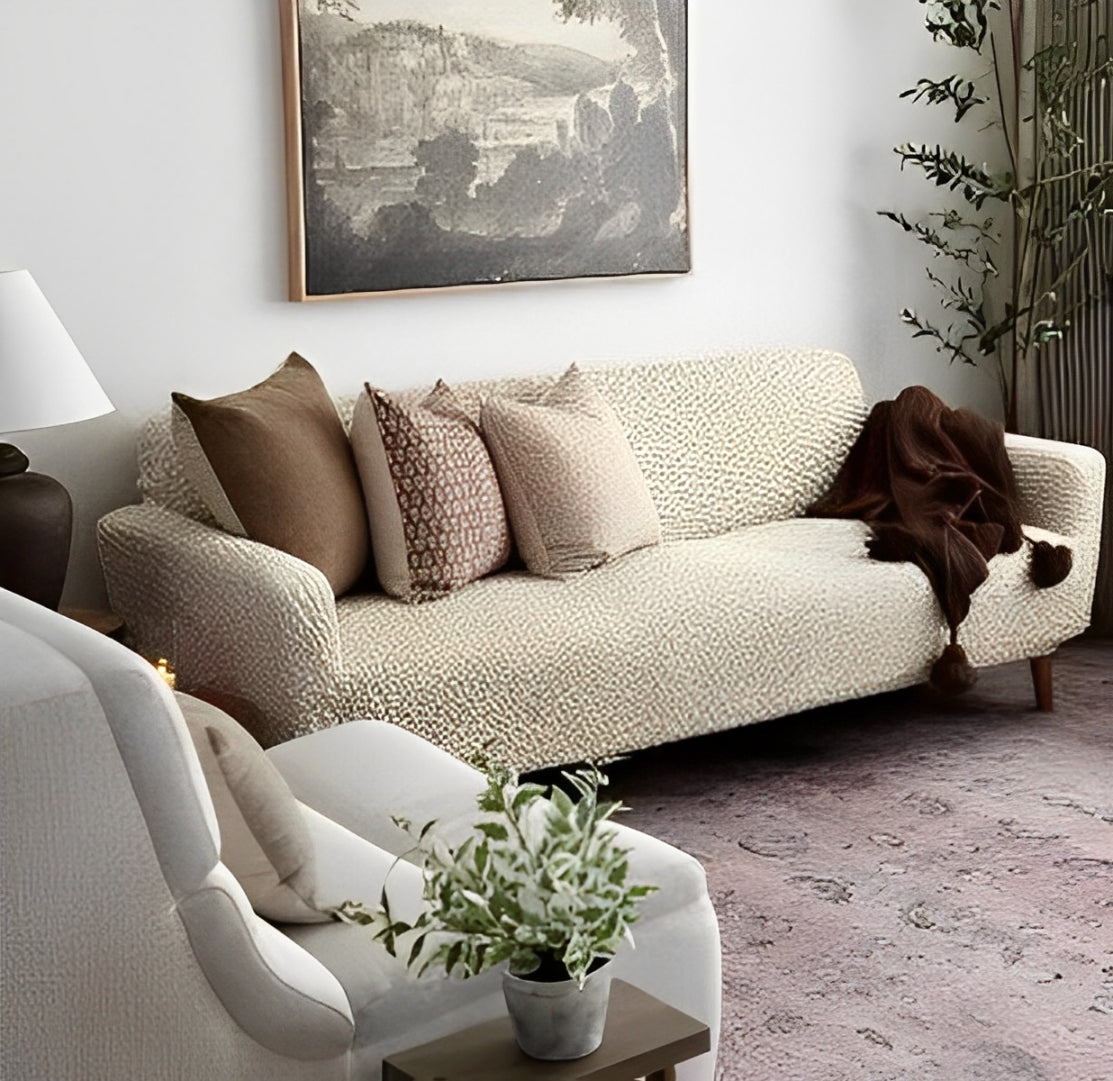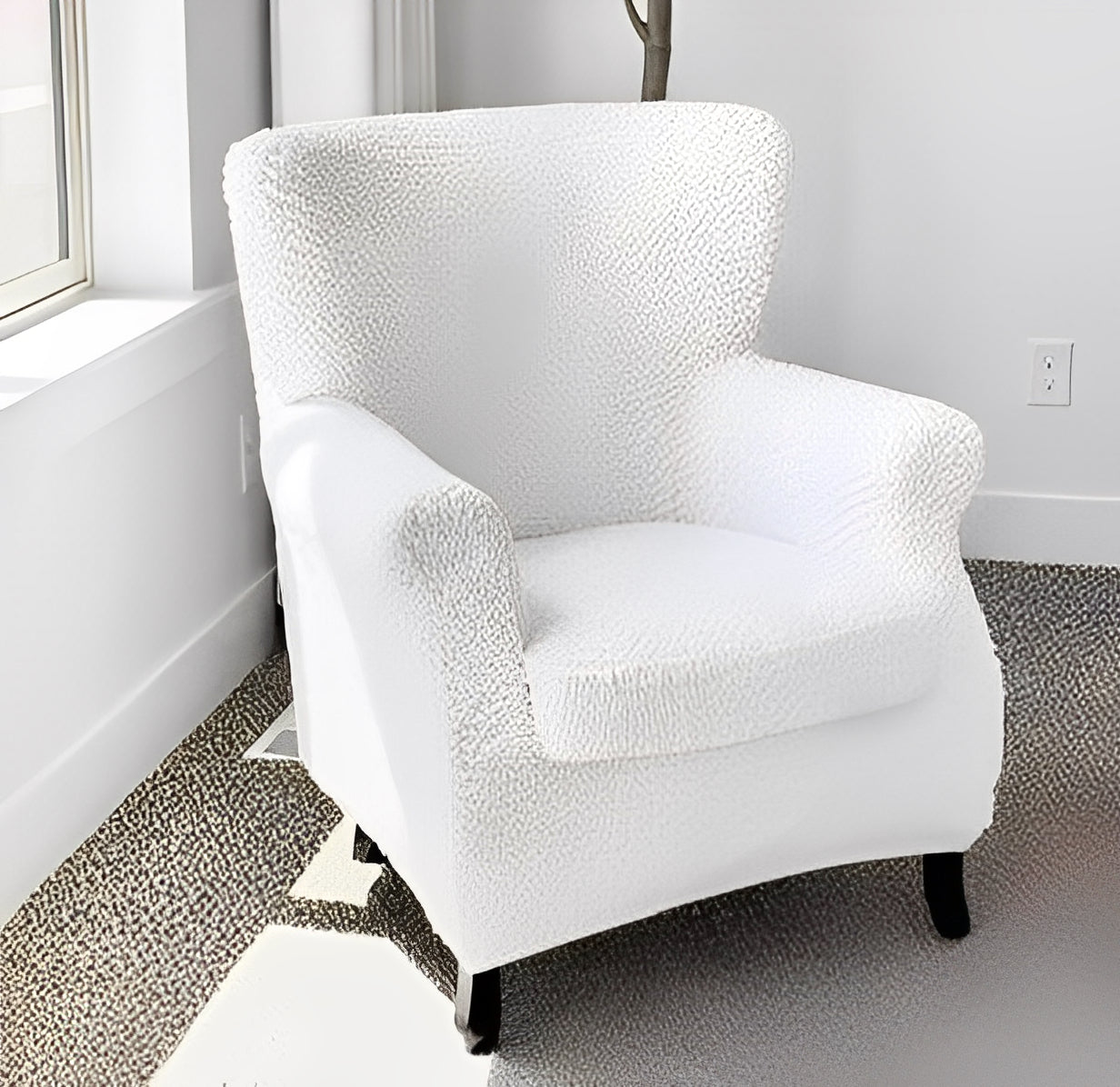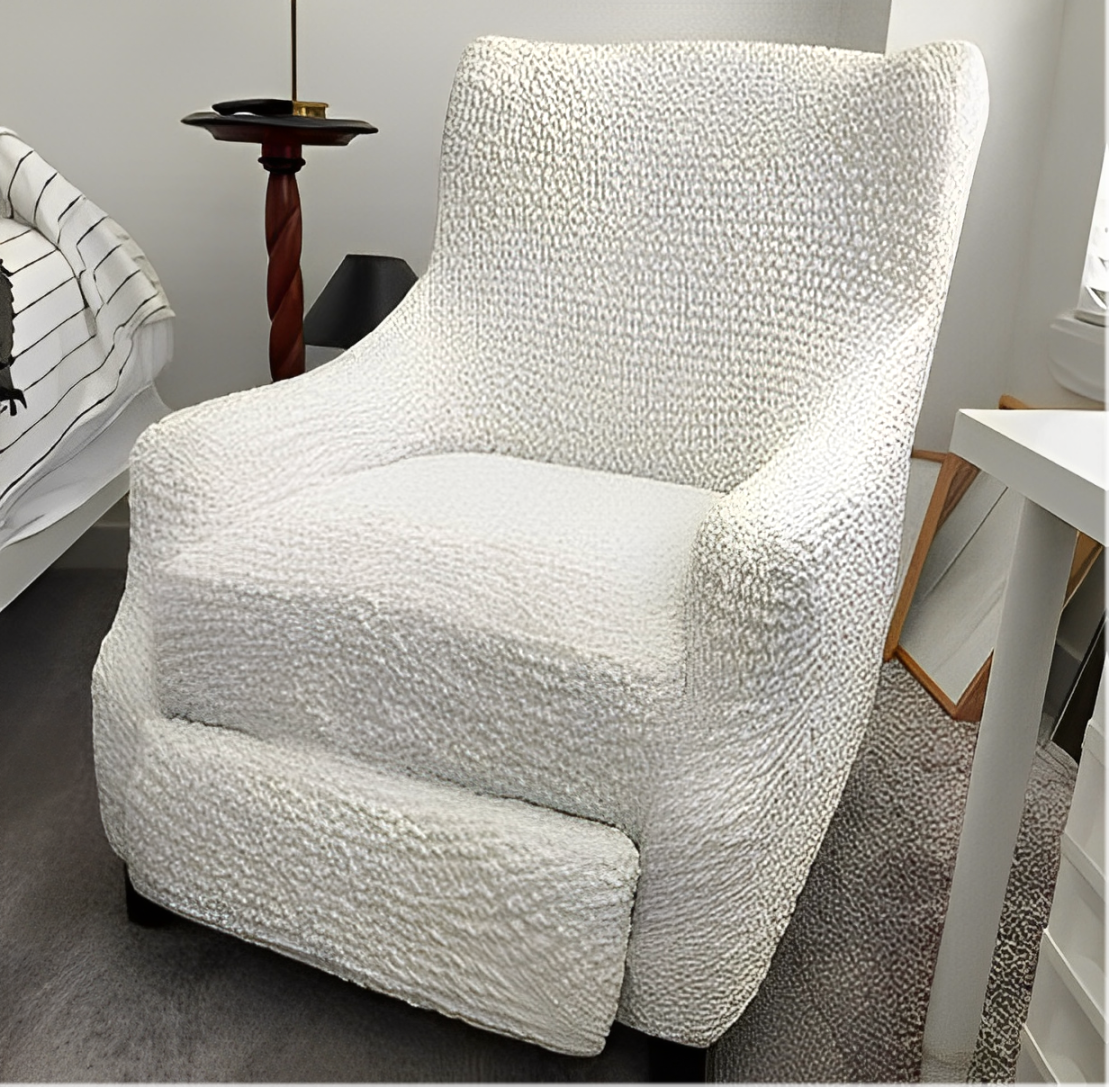One of the main reasons so many households choose microfiber upholstery is because this fabric has excellent stain resistance properties. That said, even the most durable fabrics can get soiled and dirty over time, especially if the sofa is placed in high-traffic areas or your pets steal a spot on the couch. So, it’s a good idea to learn a few tips and tricks for cleaning a microfiber couch so it looks spic and span for a long time. In this article, we’ll tell you how to clean a microfiber couch and tackle grease and oily stains to keep your furniture looking its best. Keep reading!
Cleaning a Microfiber Couch With Soap and Water

Step 1: Preparation
Check the tag on your couch. If it says “W” or “W-S”, this means it’s safe to wash it with soap and water, which is one of the easiest yet effective cleaning methods. However, before you get a bucket and soap suds, make sure to start by vacuum-cleaning the surface of your sofa. This step precedes the cleaning session no matter which method you choose.
Step 2: Mix Cleaning Solution
Now, proceed to mix the cleaning solution. Take four cups of lukewarm water and a quarter cup of dish soap and mix it using a whisk to create more foam. Take another buckle or bowl and fill it with clean water. You’ll need this water to rinse out the soap later.
Step 3: Start Scrubbing
Once the cleaning solution is ready, it’s time to roll up the sleeves and get down to work. Dip a sponge in soapy water and start gently scrubbing the couch’s surface in a circular motion. Begin with a small patch to ensure the soap doesn’t cause any harm to the fabric. If all looks good, you can safely wash the entire couch.
The best way to clean a microfiber couch is to apply soap from top to bottom. By doing so, you’ll prevent the soap from leaving stains on already-washed areas and ensure a consistent cleaning outcome. Also, don’t forget to frequently rinse the sponge. This is important to avoid spreading soap residue around.
Step 4: Dry and Fluff It Up
Once the sofa is washed, let it air dry naturally. Make sure not to use any heat sources or direct sunlight. While heat may speed up drying, it can also cause the fabric to stiffen or change color, ruining its beautiful appearance. Now, all you’re left to do is to restore the fluff. Use a soft-bristle brush or a clean, dry cloth to fluff and brush the fabric. This will help not only restore the soft texture but also remove any remaining dirt or debris.
Cleaning a Couch With Rubbing Alcohol

Step 1: Preparation
In case the tag on your couch says “S”, this means that it’s best to clean it with rubbing alcohol. This method is especially effective for removing tough stains and sanitizing the surface. To clean microfiber furniture using rubbing alcohol, you’ll need to gather a few supplies: rubbing alcohol, a clean white cloth, a small spray bottle, and a soft-bristle brush or a clean, dry cloth for fluffing the fabric. Also, like in the first method, you need to vacuum-clean your couch first.
Step 2: Get Solution Ready
Fill a small spray bottle with rubbing alcohol. You don’t need to dilute it, use it as is. Ensure the bottle is clean and free from any other substances. If you bought the product in a store, read the instructions for preparing the solution.
Step 3: Spritz the Upholstery and Scrub It
Spritz the upholstery with rubbing alcohol and, while still slightly damp, carefully scrub the stain off with a sponge or brush. As you do it, rinse and wring the sponge thoroughly to remove any soap residue. The rubbing alcohol will help break down stains and lift dirt from the microfiber fabric.
Step 4: Air Dry and Fluff
After treating the stained areas, allow your couch to dry. Microfiber sofas usually get dry pretty quickly in well-ventilated rooms. Now, use a vacuum cleaner, a brush, or a dry cloth to give your couch a fresh look by fluffing its fabric.
Cleaning In-Grained Dirt and Stains

Although the above methods are quite effective at cleaning up the soil, they may not be able to deal with some serious contaminations such as unpleasant odors, grease stains, or chewing gum. Below, we discuss in detail how to clean a microfiber sofa from stubborn and hard-to-remove dirt.
Greasy stains
If you’ve noticed an oily stain on your couch, you can get rid of it with the help of cornstarch powder. Dust the stain with the cornstarch and gently rub it in using a soft brush. Leave it for an hour or more and wipe clean. If the stain is still there, the procedure can be repeated. Cornstarch boasts great absorbing properties, which can help lift grease from the microfiber fabric.
Unpleasant odors
If the sofa is emitting an unpleasant smell, try using baking soda. Sprinkle it on the couch and leave it for at least seven to eight hours. After that, vacuum the surface of the couch. Since this method requires considerable time, it’s best to do this before going to bed, when nobody is using the sofa.
Chewing gum
Chewing gum on the upholstery can be a disaster. To tackle this tricky situation, here’s what you can do. Freeze a few ice cubes in advance and place them in a plastic bag. Then put this bag on the chewing gum. The temperature of the ice will harden the gum and make it easier to remove. Once the gum solidifies, scrape it off with the edge of your credit card, your fingernail, or a dull knife. If the gum has left a grease mark, clean it with soap water, or rubbing alcohol.
Deep Cleaning a Microfiber Sofa: Tips and Advice

Some people wrongly believe that you need to wash a microfiber couch only when it looks dirty. However, cleaning experts don’t agree with this. They are unanimous that a couch must be cleaned at least four times a year, whether it’s dirty or not. Regular microfiber sofa cleaning not only helps keep your couch looking beautiful, but it can also eliminate threats invisible to the human eye, such as fleas, dust mites, and allergens like dander and pollen. Let’s see how to deep clean a microfiber couch.
- Use a garment steamer to clean the microfiber sofa surface from bacteria that may be residing in the upholstery. Move slowly over the grooves and crevices to let the steam thoroughly penetrate the fabric.
- Vacuum clean the couch from top to bottom. If your sofa comes with cushions and sofa slipcovers, make sure to clean them as well. Use a handheld vacuum cleaner or a soft brush to remove dirt from the seams of the couch. Often underlooked, these areas tend to accumulate a lot of dust.
- Don’t forget to go over the base of the couch with a vacuum cleaner and wipe clean all the hard surfaces, such as legs and armrests.
- Look for tags on the sofa to determine the compatible cleaning method. Also, be sure to read the manufacturer’s care labels for additional guidance.
- Whether you choose to wash microfiber couches with water and soap suds or rubbing alcohol, make sure to run a quick test first. Choose an area at the back of your couch that nobody can see and apply a small amount of cleaning liquid to it. If you haven’t noticed any suspicious reactions like water spots or color fading, you can proceed with microfiber couch cleaning.
- Once the couch is clean, don’t use it until it’s completely dry. Make sure not to accelerate drying to avoid causing damage to the upholstery.
By regularly deep cleaning your microfiber sofa, you’ll ensure its longevity and maintain a clean and healthy living environment for you and your family.
Conclusion

In this article, we’ve shared with you some of the most effective ways that can help you maintain your sofa in a pristine condition and tackle even the worst stains with relative ease. Armed with this knowledge, you’ll be well-equipped to keep your sofa looking its best and address any stains or spills that come its way.
Alternatively, you can wrap your sofa with microfiber furniture covers. They will add a layer of protection to your beloved furniture, preventing dirt, dust, and stains from penetrating the upholstery, and contributing to its longevity. Moreover, unlike the upholstery, they can be easily washed in a washing machine, making their upkeep an easy job. The choice is yours!
MORE INTERIOR DESIGN IDEAS AND INSIGHTS:











